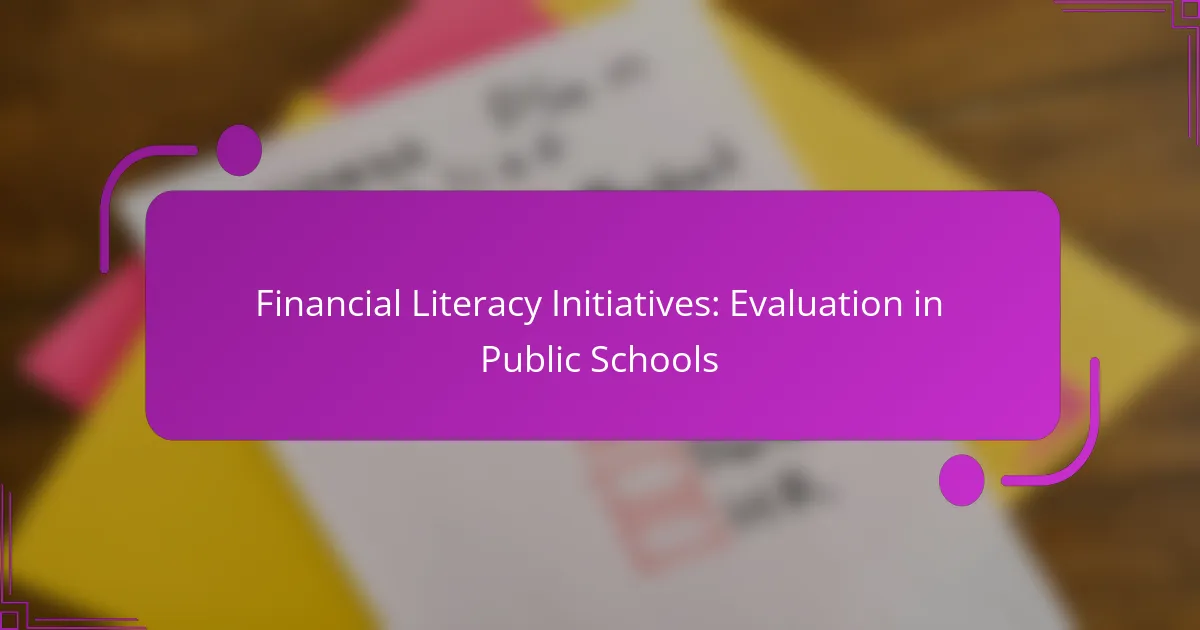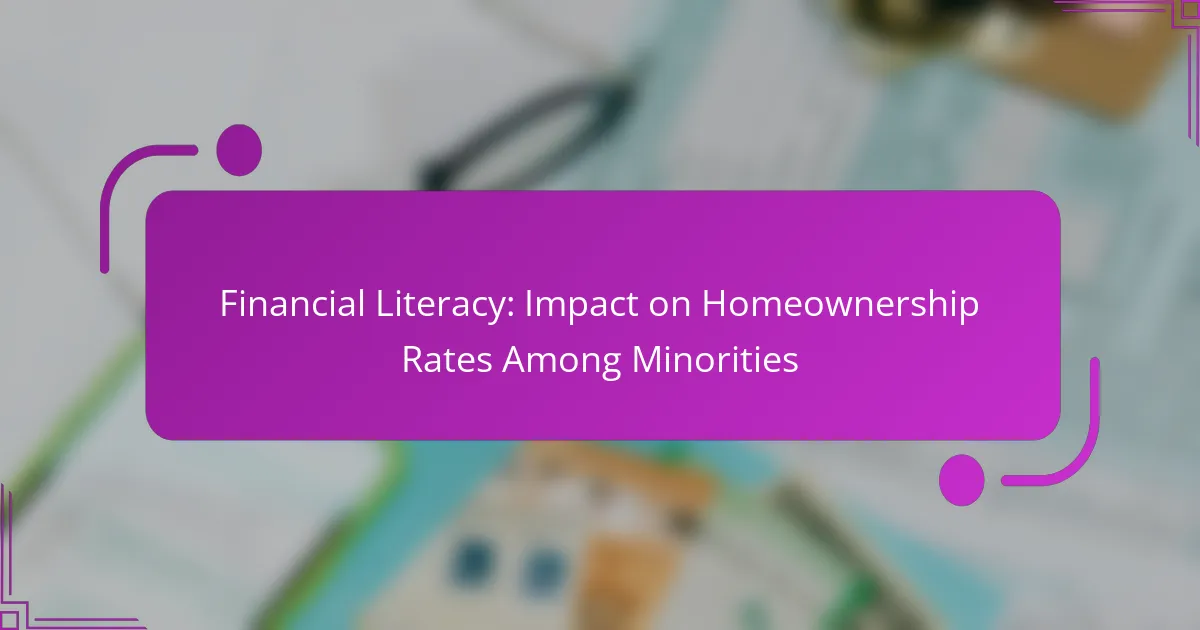Financial literacy programs are crucial for college students, equipping them with the skills needed to navigate budgeting, saving, and debt management. Programs like Everfi, Jumpstart Coalition, and Smart About Money offer interactive resources tailored to help students make informed financial choices. When selecting a program, students should evaluate accreditation, content relevance, and accessibility to ensure it fits their unique college experiences and busy schedules.
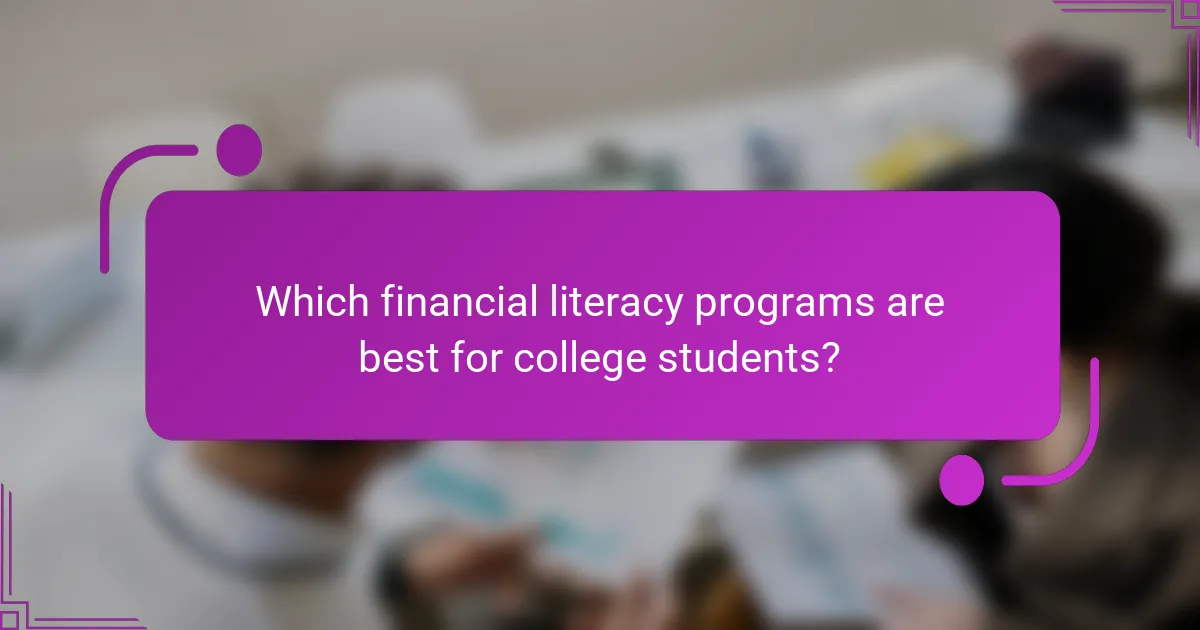
Which financial literacy programs are best for college students?
Several financial literacy programs cater specifically to college students, focusing on essential skills like budgeting, saving, and managing debt. Programs such as Everfi, Jumpstart Coalition, and Smart About Money provide interactive resources and practical guidance to help students make informed financial decisions.
Everfi Financial Literacy Program
The Everfi Financial Literacy Program offers an engaging, interactive online platform designed for college students. It covers topics like budgeting, credit scores, and student loans through gamified learning experiences.
Students can access modules at their own pace, making it easy to fit into busy schedules. Many colleges partner with Everfi, providing free access to students, which enhances its appeal.
Jumpstart Coalition for Personal Financial Literacy
The Jumpstart Coalition focuses on improving the financial literacy of students from kindergarten through college. It provides resources, curricula, and tools that educators can use to teach financial concepts effectively.
Students can benefit from the coalition’s comprehensive guidelines and standards, which emphasize practical skills like managing expenses and understanding loans. Their website also offers a wealth of additional resources for self-directed learning.
Smart About Money
Smart About Money is a free resource that offers courses and tools for college students to enhance their financial knowledge. The platform covers various topics, including budgeting, saving, and investing.
With a user-friendly interface, students can easily navigate through the content and access calculators and worksheets to apply what they learn. This program encourages proactive financial management, which is crucial for long-term success.
National Endowment for Financial Education
The National Endowment for Financial Education (NEFE) provides a wealth of resources aimed at improving financial literacy among college students. Their programs focus on critical areas such as financial planning, debt management, and consumer rights.
NEFE’s resources are research-backed and designed to be accessible, making them suitable for diverse student populations. They also offer workshops and webinars that can be beneficial for students seeking interactive learning experiences.
Money Management International
Money Management International (MMI) is a nonprofit organization that offers financial education and counseling services. Their programs include workshops and online courses tailored for college students, focusing on budgeting, credit management, and debt reduction.
Students can take advantage of MMI’s personalized counseling sessions, which provide tailored advice based on individual financial situations. This hands-on approach can help students develop actionable strategies for managing their finances effectively.
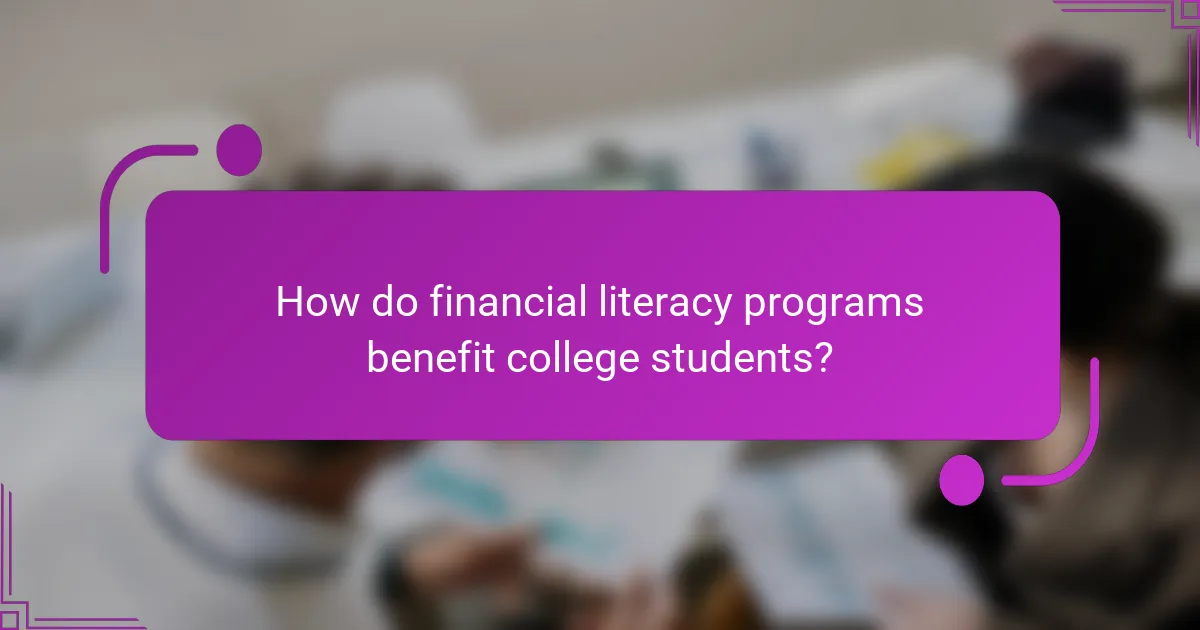
How do financial literacy programs benefit college students?
Financial literacy programs provide college students with essential skills to manage their finances effectively. By enhancing their understanding of budgeting, credit management, and overall financial confidence, these programs prepare students for real-world financial challenges.
Improved budgeting skills
Financial literacy programs teach students how to create and maintain a budget, which is crucial for managing limited resources. Participants learn to track income and expenses, prioritize spending, and set financial goals. This skill helps students avoid debt and make informed decisions about their finances.
For instance, using budgeting apps can simplify this process, allowing students to categorize expenses and visualize their financial situation. A good rule of thumb is to allocate around 50% of income to needs, 30% to wants, and 20% to savings or debt repayment.
Enhanced credit management
Understanding credit is vital for college students, as it impacts future financial opportunities. Financial literacy programs cover topics such as credit scores, credit reports, and how to use credit responsibly. Students learn the importance of timely payments and maintaining low credit utilization.
For example, students are often advised to keep their credit utilization below 30% of their total credit limit to maintain a healthy credit score. Additionally, they should regularly check their credit reports for errors, which can be done for free once a year through major credit bureaus.
Increased financial confidence
By participating in financial literacy programs, students gain the knowledge and skills necessary to make informed financial decisions, boosting their confidence. This newfound confidence can lead to better financial habits and a proactive approach to managing money.
Students often report feeling more equipped to handle financial challenges such as student loans, unexpected expenses, and long-term savings. Engaging in discussions and workshops can further enhance this confidence, as students share experiences and strategies with peers.

What factors should college students consider when choosing a financial literacy program?
College students should consider program accreditation, content relevance to their specific college experiences, and the accessibility and format of the program. These factors ensure that the program is credible, applicable, and easy to engage with during their busy academic lives.
Program accreditation
Accreditation indicates that a financial literacy program meets certain educational standards. Look for programs accredited by recognized organizations or institutions, as this can enhance the program’s credibility and the value of the knowledge gained.
Additionally, check if the program is endorsed by universities or financial institutions, which can provide further assurance of its quality. Programs that have partnerships with reputable organizations often offer more reliable content and resources.
Content relevance to college life
The best financial literacy programs for college students should address topics directly related to their experiences, such as budgeting for living expenses, managing student loans, and understanding credit scores. Programs that include real-life scenarios and practical applications can be particularly beneficial.
Consider programs that offer modules on financial planning for after graduation, including saving for emergencies and investing basics. This relevance helps students apply what they learn to their current financial situations and future goals.
Accessibility and format
Accessibility is crucial for busy college students. Look for programs that offer flexible formats, such as online courses, mobile apps, or in-person workshops, allowing students to learn at their own pace and convenience. Programs that provide interactive elements, like quizzes and discussion forums, can enhance engagement.
Additionally, consider the cost of the program. Many universities offer free or low-cost financial literacy resources, so explore these options before committing to paid programs. Ensure that the program is easy to navigate and provides clear instructions to facilitate learning.
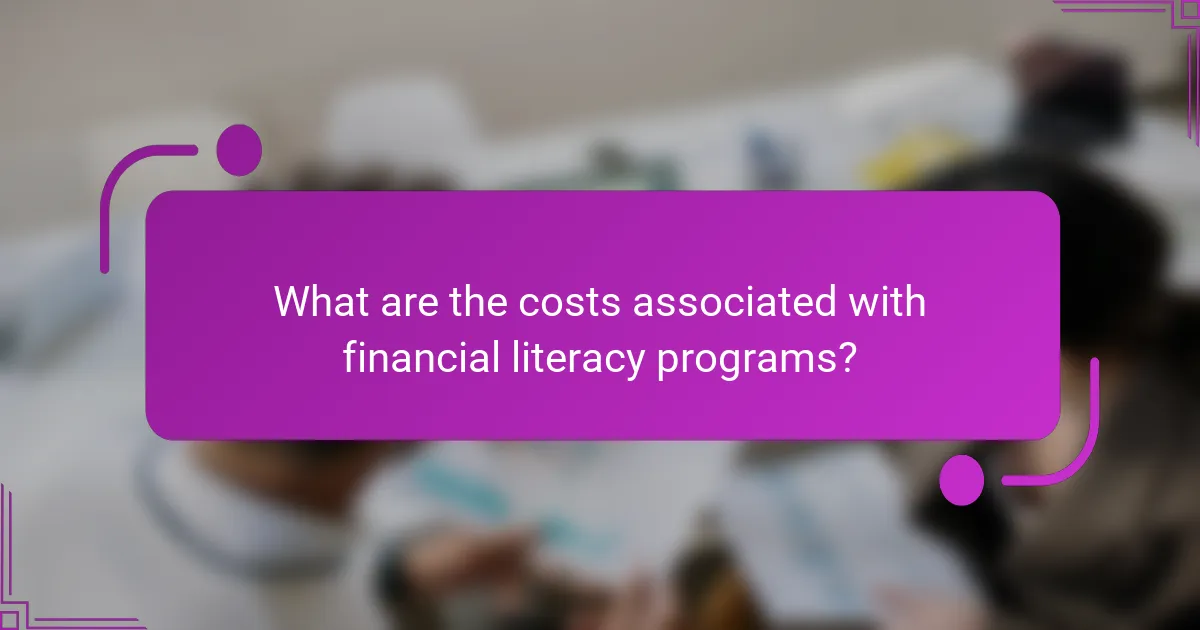
What are the costs associated with financial literacy programs?
The costs of financial literacy programs can vary widely depending on the type of resource chosen. Free online resources are available, while tuition-based workshops and subscription services typically involve fees that can range from modest to significant amounts.
Free online resources
Many organizations and educational institutions offer free online resources for financial literacy. Websites like Khan Academy and the National Endowment for Financial Education provide courses, articles, and tools at no cost. These resources are accessible to anyone with an internet connection and can be a great starting point for college students.
While free resources are beneficial, they may lack personalized guidance or structured learning paths. Students should supplement these materials with practical applications, such as budgeting exercises or financial planning tools, to enhance their understanding.
Tuition-based workshops
Tuition-based workshops often provide in-depth training on financial literacy topics, such as budgeting, investing, and credit management. Costs for these workshops can range from a few hundred to several thousand dollars, depending on the provider and the length of the course. Some universities offer these workshops at discounted rates for their students.
When considering tuition-based workshops, evaluate the curriculum and instructor qualifications. Look for programs that offer hands-on activities and real-world applications to ensure a comprehensive learning experience.
Subscription services
Subscription services for financial literacy typically charge a monthly or annual fee, which can range from $10 to $50 per month. These services often provide access to a library of courses, webinars, and personalized financial coaching. Examples include platforms like Skillshare or financial apps that offer educational content.
Before committing to a subscription, assess the value of the content offered and whether it aligns with your learning goals. Many services offer free trials, allowing students to explore the material before making a financial commitment.
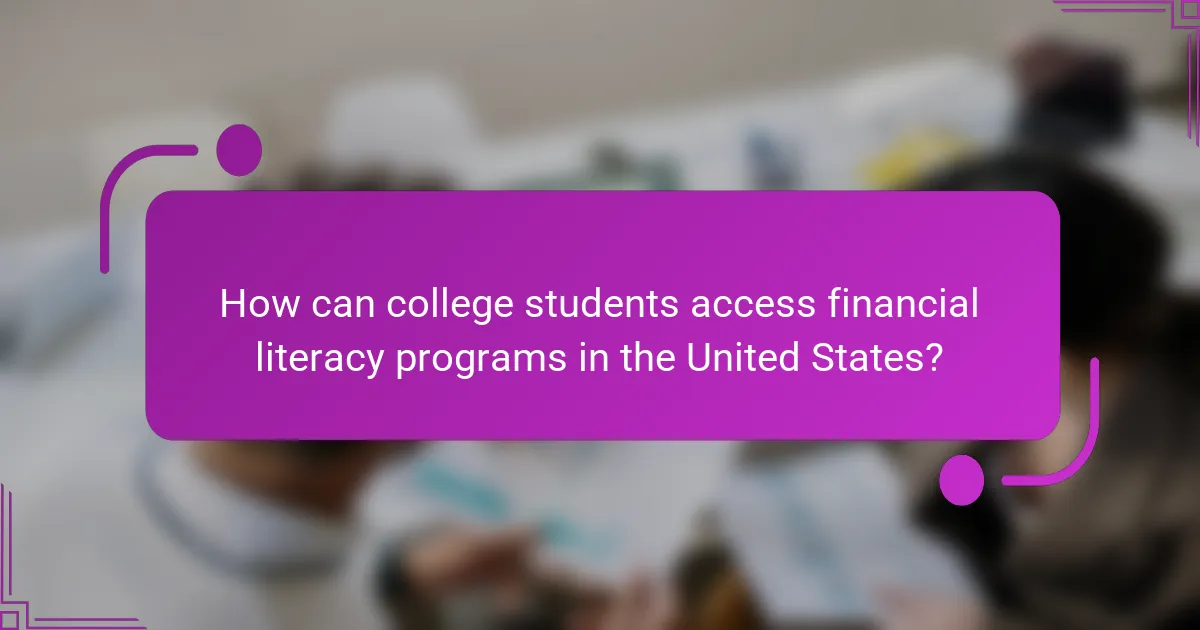
How can college students access financial literacy programs in the United States?
College students in the United States can access financial literacy programs through various channels, including university partnerships, community workshops, and online platforms. These resources provide essential knowledge on budgeting, saving, and managing student loans.
University partnerships
Many universities collaborate with financial institutions or nonprofit organizations to offer financial literacy programs tailored for students. These partnerships often include workshops, seminars, and one-on-one counseling sessions that address topics like credit management and investment basics.
Students can typically find these programs advertised on their university’s website or through campus newsletters. Participating in these programs can enhance students’ financial skills and help them make informed decisions about their finances.
Community workshops
Local community organizations frequently host workshops aimed at improving financial literacy among young adults. These workshops may cover a range of topics, from budgeting techniques to understanding student loans and credit scores.
Attending community workshops can be a cost-effective way for students to gain practical financial knowledge. Many of these workshops are free or offered at a low cost, making them accessible to a wide audience.
Online platforms
Numerous online platforms provide financial literacy resources specifically designed for college students. Websites and apps offer courses, webinars, and interactive tools that cover essential financial topics at the student’s convenience.
Examples of popular online resources include platforms like Khan Academy and Mint, which provide free educational content and budgeting tools. Students should look for reputable sites that offer comprehensive and up-to-date information to ensure they are learning effective financial strategies.
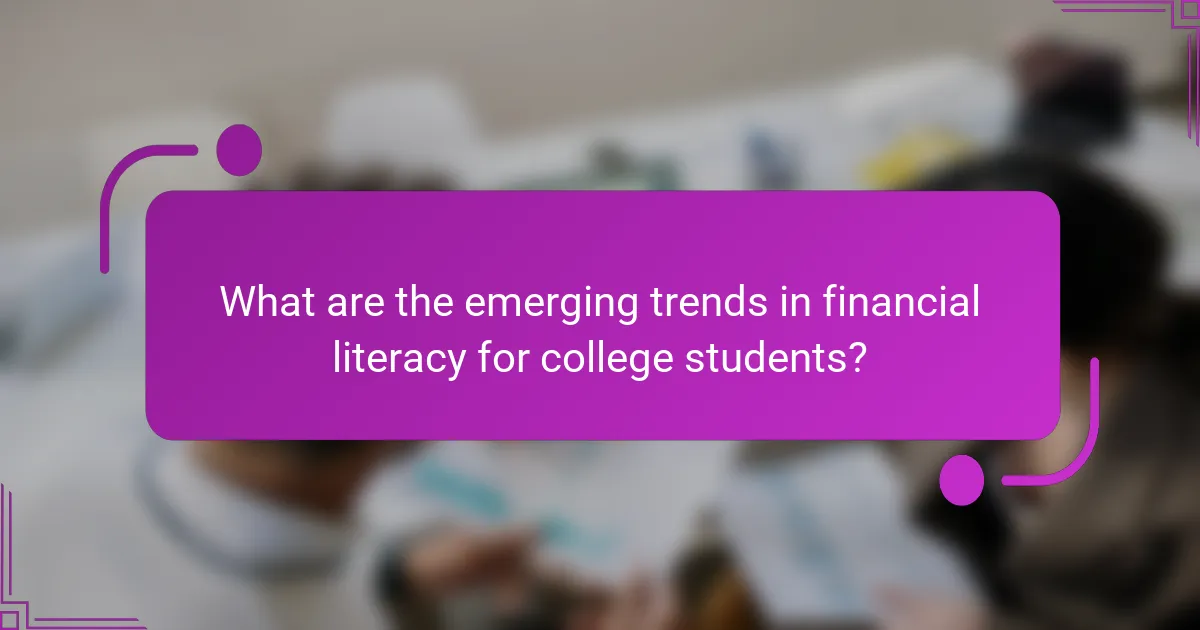
What are the emerging trends in financial literacy for college students?
Emerging trends in financial literacy for college students focus on interactive and engaging methods to enhance learning. These trends include the integration of technology, personalized learning experiences, and a strong emphasis on practical application of financial concepts.
Gamification of learning
Gamification of learning involves incorporating game design elements into educational content to make financial literacy more engaging for college students. This approach can include point systems, rewards, and challenges that motivate students to participate actively in their financial education.
For example, platforms like Kahoot! or Quizlet allow students to compete in quizzes related to budgeting, saving, and investing, turning learning into a fun experience. By using gamified elements, students may retain information better and apply it in real-world scenarios.
When implementing gamification, consider balancing competition with collaboration to foster a supportive learning environment. Avoid overly complex games that may detract from the core financial concepts being taught, ensuring that the focus remains on practical skills and knowledge acquisition.

